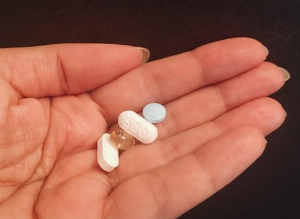How a brisk walk really CAN boost your health: Regular strolls 'more effective than vigorous exercise at preventing diabetes'
Published 26 Jul 2016

A brisk walk is better than vigorous jogging for keeping diabetes at bay, according to new research.
Doctors advise regular exercise and low-fat diets to improve glucose control in people with pre-diabetes.
But for those who dread the gym, rejoice: a new study by Duke Health has found walking briskly on a regular basis may be more effective than intense exercise.
The findings, published online July 15 in the journal Diabetologia, are the result of a randomized, six-month study of 150 participants, each of whom was designated as having pre-diabetes based on elevated fasting glucose levels.
Study participants were randomized into four groups.
The first group followed an intervention modeled after the Diabetes Prevention Program (DPP), considered a gold standard, that aims to achieve a seven per cent body weight reduction over six months.
The program requires cutting calories, eating a low-fat diet, and exercising.
Study participants in this group adopted the diet changes, and performed moderate-intensity exercise equivalent to 7.5 miles of brisk walking in a week.
Other study participants were randomly assigned to receive exercise only, using different amounts and intensities.
The first was a low-amount at moderate intensity (equivalent to walking briskly for 7.5 miles per week).
The second was a high-amount at moderate intensity (equivalent to walking briskly for 11.5 miles per week).
And the third was a high-amount at vigorous intensity (equivalent to jogging for 11.5 miles per week).
'We know the benefits of lifestyle changes from the DPP, but it is difficult to get patients to do even one behavior, not to mention three,' said Dr. William Kraus, M.D., the study's lead author and professor of medicine in the Division of Cardiology at Duke University School of Medicine.
'We wanted to know how much of the effect of the DPP could be accomplished with exercise alone,' Kraus said.
'And which intensity of exercise is better for controlling metabolism in individuals at risk for diabetes.'
On average, participants in the DPP group had the greatest benefit, with a nine per cent improvement in oral glucose tolerance - a key measure of how readily the body processes sugar and an indicator used to predict progression to diabetes.
One of the exercise-only groups came in a close second. Participants in the moderate-intensity, 11.5-mile group saw a seven per cent improvement in glucose tolerance on average.
The moderate-intensity, 7.5-mile group had a five per cent improvement on average.
The lowest improvement was seen among those in the vigorous-intensity, 11.5-mile group, with only a two per cent average improvement.
'Another way to say it is that a high amount of moderate-intensity exercise alone provided nearly the same benefit on glucose tolerance that we see in the gold standard of fat and calorie restriction along with exercise,' said Cris Slentz, Ph.D., a study co-author and assistant professor of medicine in the Division of Cardiology at Duke.
Kraus and Slentz said the study's results could reflect the different ways in which high- and moderate-intensity exercise impact the body.
'High-intensity exercise tends to burn glucose more than fat, while moderate-intensity exercise tends to burn fat more than glucose,' Kraus said.
'We believe that one benefit of moderate-intensity exercise is that it burns off fat in the muscles, which relieves the block of glucose uptake by the muscles. That's important because muscle is the major place to store glucose after a meal,' Kraus said.
The authors note that only a diabetes outcome study could determine whether moderate-intensity exercise is actually superior to high-intensity exercise at preventing patients with pre-diabetes from progressing to diabetes.
Still, Kraus said the study's results could provide manageable alternatives for pre-diabetic patients.
'When faced with the decision of trying to do weight loss, diet, and exercise versus exercise alone, the study indicates you can achieve nearly 80 percent of the effect of doing all three with just a high amount of moderate-intensity exercise,' he said.
'I was heartened by the fact that I found out that I can give patients one message and they can get nearly the same effect as when required to exercise, diet and lose weight all at the same time.'
Daily Mail

 Facebook
Facebook Twitter
Twitter



